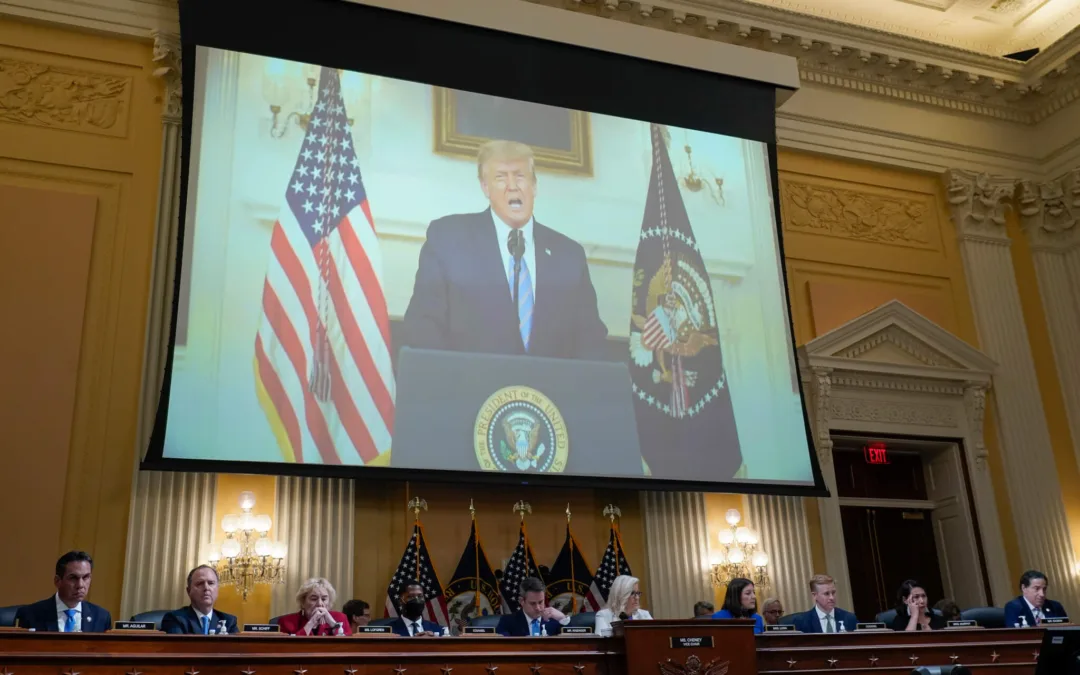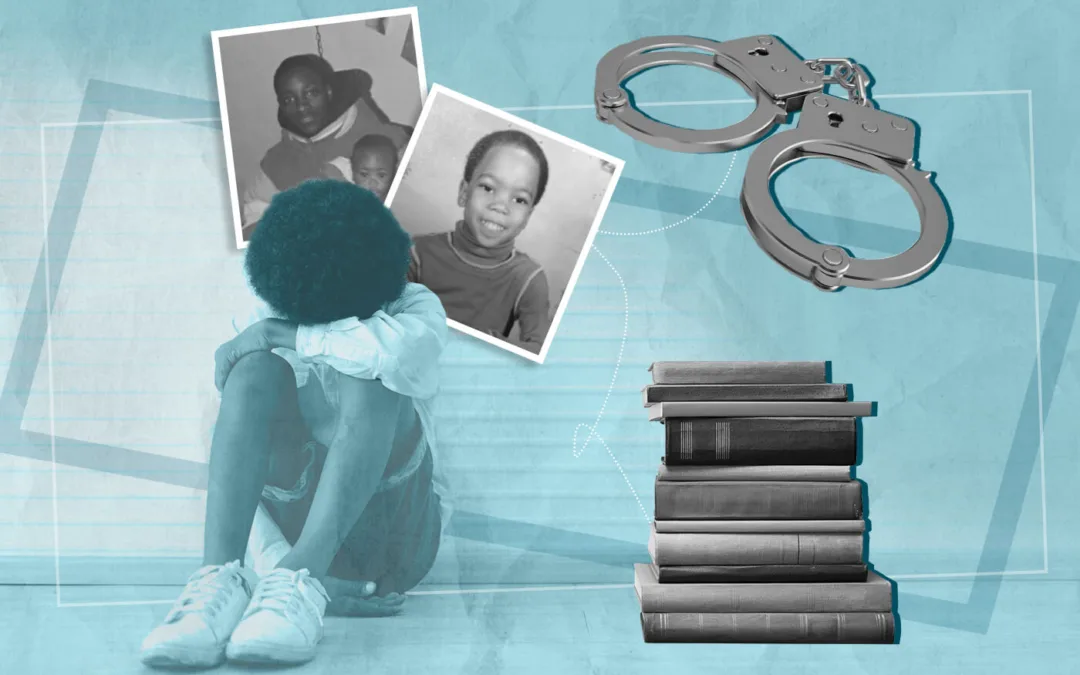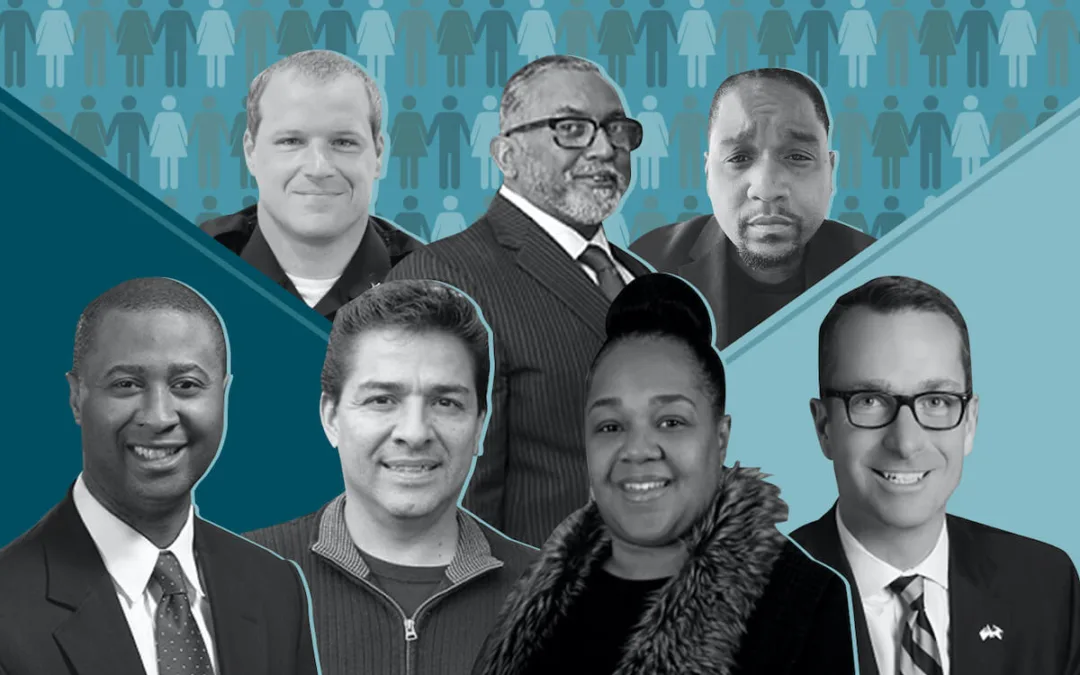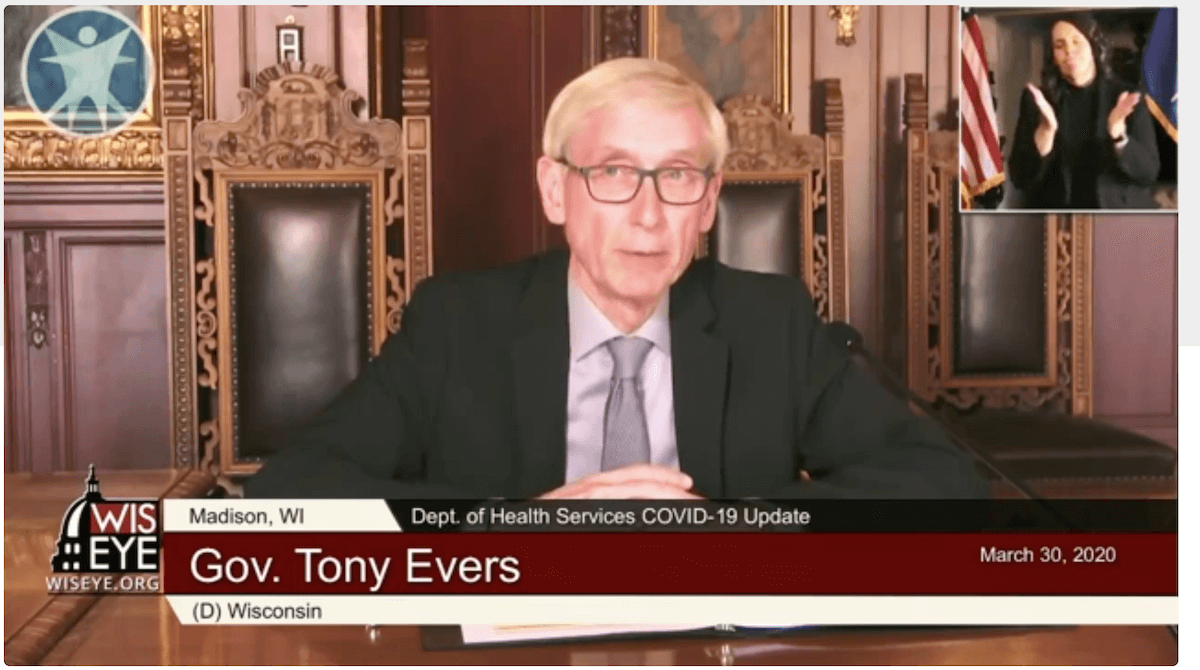
#image_title
#image_title
About 90% of children who commit crimes have significant trauma histories, according to a state trauma-informed care coordinator. But the system is not set up with treatment and rehabilitation as priorities, explained childhood trauma survivors and experts. Wisconsin’s governor wants to change that.
Growing up in Milwaukee, Dominee Meek dreamt of becoming an astronaut and going to Mars. An introvert, he loved reading, math, and science.
“I was the classic nerd,” said Meek, 44. “I still am. I can admit it now.”
But his home life—rife with domestic violence and a childhood filled with physical, mental and emotional abuse, and at least one instance of sexual abuse—left him without a sense of stability or belonging.
He developed anger issues. He used to hurt himself and consider suicide. He remembers punching his childhood home’s foundation blocks until his hands bled.
“The pain of hitting them, at least temporarily, covered the pain I was feeling inside. But,” Meek paused, staring at his hands before wiping away a tear. “The pain always came back.”
Meek joined a gang at 14. Finally, he felt like he belonged somewhere. Finally, he could strike back against people who hurt him. By age 15, Meek had made a little bit of a name for himself. He’d even kicked a member of a rival gang out of his neighborhood.
“At least for a little while, I’m feeling like I’m somebody,” Meek said.
One day in 1992, Meek and his fellow gang members saw the rival gang member back in the neighborhood outside of a store, so they beat him up and then drove away. One member of his group said he was tired of Meek and the rival gang member having problems.
“Somebody needs to kill him,” Meek recalls one of the other gang members saying.
It got quiet in the car. Meek, still trying to prove himself as both a man and a gang member, agreed to do it.
“The other types of abuse I suffered, I couldn’t get them back,” Meek said, explaining his thinking at the time. “But I’m a gang member now, and I’ve got my brothers with me, and I can get you for hurting me.”
They returned to the store. Meek got out of the car, gun in hand, and aimed it at the rival gang member.
He fired twice, missing both shots. He killed a bystander instead.
Meek turned himself in a few days later. At age 15, he was tried as an adult and sentenced to life in prison. His incarceration began on his 16th birthday. He spent nearly 28 years in prison before being released last September on parole.
Meek sees his story as an example of how childhood trauma can lead a young person to make a series of poor decisions that can permanently alter lives.
While not every child who experiences trauma will end up in the criminal justice system, those who do almost always share the burden of past trauma. About 90% of children who commit crimes have significant trauma histories, according to Scott Webb, trauma-informed care coordinator for the Wisconsin Department of Health Services (DHS).
Trauma is felt in all communities in Wisconsin, but it is especially prevalent in impoverished households and communities of color, according to DHS data. Fifty-nine percent of people in Wisconsin have experienced at least one adverse childhood experience, a common scientific measure of trauma, according to DHS data.
As a number of organizations continue to work to address this epidemic of childhood trauma, Gov. Tony Evers has included in his 2021-23 budget proposals $150 million for mental health resources in addition to a series of juvenile justice reforms, two initiatives that could help provide both juvenile offenders and the general public with better trauma treatments.
Too often, childhood trauma isn’t taken into account when sentencing juveniles in the state’s criminal justice system, said Sean Wilson, smart justice director for the American Civil Liberties Union (ACLU) of Wisconsin.
“When the young people commit acts of violence, does accountability need to be had? Absolutely,” Wilson said.
Earlier: Proposed Bill Would End ‘Unconscionable’ Practice of Giving Kids Life Without Parole
“What does that accountability look like?” Wilson continued. “It looks like figuring out what happened to this young person to make them go out and commit the act that they’ve committed. And the underlying reason for most of these acts that are committed by young people in this state is trauma.”
“We Are Kids”
Like Meek, Garland Hampton, 42, had a trauma-filled childhood in Milwaukee. Drugs and alcohol were common in the home. He said he was abused “every which way”—verbally, physically, and emotionally—and he was even raped as a child.
Hampton managed to find a group of friends with similar experiences—abusive parents, dysfunctional households. They bonded over their trauma. They cried on each other’s shoulders.
“We are kids that are hopeless,” Hampton said. “We are kids that are not loved. We are kids that are abused. We are broken.”
Eventually, they joined a gang.
“I wanted to belong,” Hampton said. “I wanted to be cared for. I wanted to be heard. I wanted to be loved. But when you a kid and you turn to the streets, you owe something if that’s what you want in return.”
At age 15 in 1994, Hampton fatally shot another gang member in a dispute. Hampton was sentenced to life in an adult prison—an experience, Wilson said, that can compound trauma and lessen the chance a young person will be successfully rehabilitated.
Hampton described his experience at an adult facility where he had to fend for himself.
“I was put into a jungle where I’m watching men get raped,” Hampton said. “I mean literally raped, beaten. Guys getting stabbed, guys getting jumped on and beat up. Nose broken, jaws broken. Eyeballs hanging out, getting knocked out of their head. … And you put a kid into that environment and say, ‘Hey, defend for yourself.’”

Wilson explained that the system is set up primarily to punish, when it should instead be focused on rehabilitation and restorative justice, a practice that emphasizes reconciliation and healing. Holding juveniles who commit crimes accountable “does not look like them being placed in a cell with someone who is old enough to be their father, somebody who is old enough to be their grandfather,” he said.
This practice of locking kids up is “usually the worst thing to do,” said Dr. David Thompson, a child psychologist from Burlington.
“I won’t say we’re throwing a child away when we’re sending them to corrections,” said Thompson. “But sending a child [away] is not usually effective treatment. We’ll put it that way. Corrections is designed for security first and treatment second.”
Juvenile Justice in Wisconsin
There are currently 410 incarcerated people in Wisconsin who were sentenced to 20-plus-year sentences as minors, Wendy Sisavath, director of the Wisconsin Alliance for Youth Justice, told UpNorthNews in January.
Wisconsin automatically tries 17-year-olds as adults. Minors as young as 15 can be waived into adult court for any crime, and 14-year-olds can be waived into adult court for extreme crimes.
The state is also one of 26 states that has not updated its laws to eliminate life-without-parole sentences for juveniles, despite a series of US Supreme Court rulings that such sentences are unconstitutional for minors due to the differences in brain development and decision-making compared to adults. Wisconsin had 120 so-called “juvenile lifers” as of 2019, according to the ACLU of Wisconsin.
Over the past two decades, youth incarceration has fallen at Lincoln Hills, Copper Lake, and the Mendota Juvenile Treatment Center—the state’s three high-security “Type 1” juvenile corrections facilities. According to Department of Corrections (DOC) data, the three facilities had an average daily population of 819 juveniles in 2002, a number that had fallen to 156 as of 2019.
While the state is locking up fewer minors, it still favors incarceration over sending juveniles to Type 2 facilities, which keep kids in their community. In 2018, there was an average daily population of just 61 juveniles in Type 2 facilities.
Evers’ budget proposals include eliminating the requirement that 17-year-olds be tried as adults, eliminating Type 1 facilities, increasing funding for residential and community-based juvenile justice treatment, banning life-without-parole sentences for minors, and abolishing the “serious juvenile offenders” designation, which imposes tougher punishments.
Evers also proposed raising the minimum age for an adult-court waiver to 16 and restricting adult waivers to felonies; 14-year-olds could still be tried as adults for homicides and assaults at juvenile corrections facilities.
“Our justice system should be about both accountability but also about the opportunity for treatment and rehabilitation,” Evers said in his budget address. “And any meaningful reform of the juvenile justice system must include this approach.”
Evers also proposed $150 million in additional mental health funding to avoid incarceration.
“We can’t keep throwing your taxpayer dollars into a system that doesn’t help our state or our people thrive—it’s holding us back,” Evers said.
State Sen. Dale Kooyenga (R-Brookfield) said last month Republicans “want to look at” Evers’ proposals for juvenile justice reform, but do not necessarily want those provisions included in the state budget. Rep. Mark Born (R-Beaver Dam), co-chair of the Legislature’s powerful budget-writing committee, told Wisconsin Public Radio most of Evers’ proposals will be stricken from the budget.
Organizing for Change
Meek and Hampton both said they began to turn a corner when they finally opened up about being sexually abused as children.
Hampton participated in self-help programs and took vocational classes, in addition to obtaining his high school diploma, he said. Meek said he began speaking to youth intervention groups and mentoring young prisoners, an effort that contributed to his own healing.
Now that Hampton and Meek are free men, they are putting their energy into spreading awareness of trauma and trying to help kids who are in similar situations. They are involved with the Wisconsin Alliance for Youth Justice; in January they testified at a legislative hearing against juvenile life-without-parole sentences. Meek is an organizer with Ex-Incarcerated People Organizing; Hampton said he plans to work with troubled youth once the COVID-19 pandemic has subsided.
Both pointed to the importance of early trauma education and treatment for parents, children, and teachers, to set children on the right path.
“[There] are telltale signs that something is wrong,” Hampton said, like missing school, starting fights, or committing crimes. “When we see this and we come in contact with this, we have an obligation to find these things out and then help.”
Children shouldn’t be incarcerated as a first resort, Meek said. Instead, the system’s first instinct should be to provide the child with mental health treatment in secure, restoration-forward facilities. The benefits of rehabilitation should outweigh the urge to solely punish juvenile offenders, he argued.
“The reason this question is asked is because it’s not your child. So the question is, ‘How do we deal with another person’s child who does something?’” Meek said. “But let’s flip it. How would I deal with my child? If we stop asking it like it’s somebody else’s child, the answer becomes easy.”
If you or someone you know is struggling with past trauma, visit the Wisconsin Trauma Project’s website to find resources.
Politics

Biden administration bans noncompete clauses for workers
The Federal Trade Commission (FTC) voted on Tuesday to ban noncompete agreements—those pesky clauses that employers often force their workers to...

Opinion: Trump, GOP fail January 6 truth test
In this op-ed, Milwaukee resident Terry Hansen reflects on the events that took place on January 6, the response from Trump and other GOP members,...
Local News

Readers Poll: Top Bowling Alleys in Wisconsin
Looking for the best bowling in Wisconsin? Look no further! Our readers have spoken in our recent poll, and we have the inside scoop on the top...

8 Wisconsin restaurants Top Chef judges are raving about
Top Chef’s 21st season is all about Wisconsin, and on-screen, it’s already apparent that the judges feel right at home here. But, while filming in...




